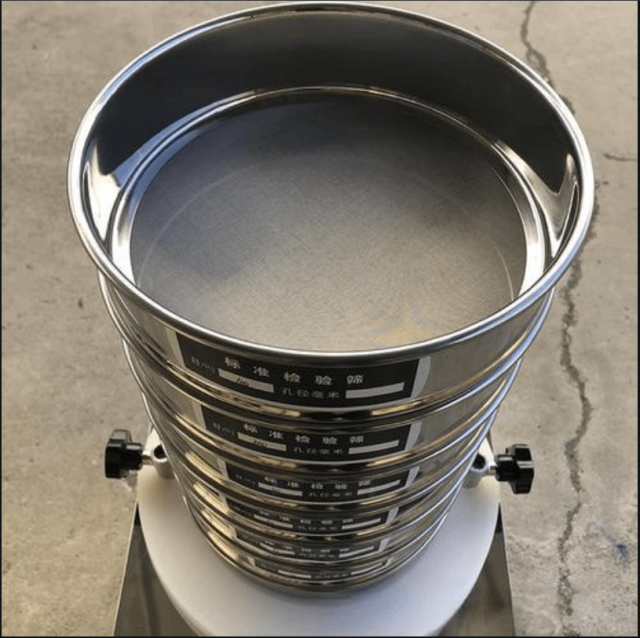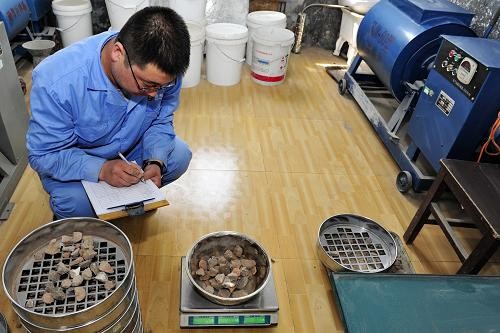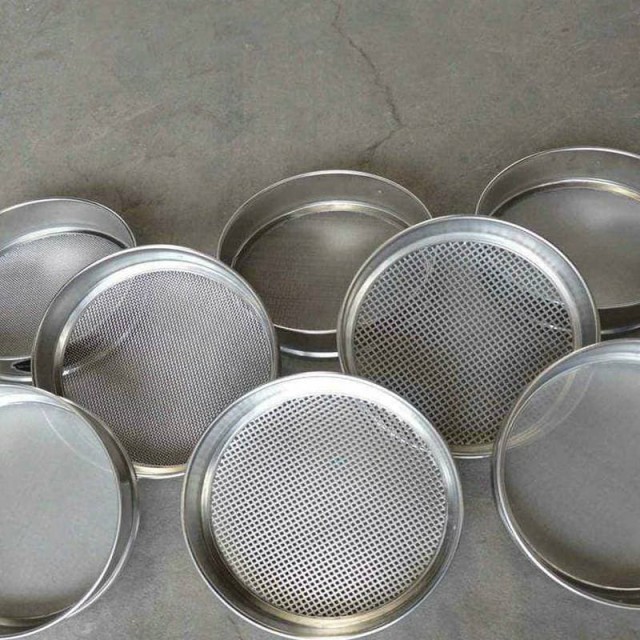Introduction to Vibratory Sieve Shaker
A vibratory sieve shaker is a crucial tool in laboratory testing across a wide range of industries, including food, medicine, chemical, mining, and more. It works by agitating particles and separating them based on particle size, providing accurate and consistent results in testing. In this ultimate guide to the application and benefits of vibratory sieve shakers, we will explore the components and functioning of this equipment, its extensive applications, and the factors to consider when selecting the right sieve shaker. Additionally, we will delve into the benefits of using a sieve shaker, including accuracy, efficiency, and flexibility. Lastly, we will provide recommendations for choosing the right vibratory sieve shaker and highlight the benefits of using KINTEK sieve shakers.

Understanding the Working Principle of a Vibro Sieve
A vibro sieve is a type of sieving equipment that can be used in various industries, including pharmaceutical, food, and chemical industries. It is designed to separate particles according to their size and shape. This article will explain the working principle of a vibro sieve, including the three-dimensional motion created by the vibro sieve, how the vibration motor converts rotary motion into three-dimensional motion, and the role of the screen surface in the sieving process.
Three-dimensional motion created by the vibro sieve
When the vibro sieve is in operation, the vibration motor generates rotary motion, which is then transformed into three-dimensional motion through the use of the upper and lower hammers mounted on the motor. This three-dimensional motion can be described as a combination of horizontal, vertical, and inclined movements. The amplitude and frequency of the three-dimensional motion can be adjusted to suit different types of materials and sieving requirements.
How the vibration motor converts rotary motion into three-dimensional motion
The vibration motor is the heart of the vibro sieve. It is responsible for converting rotary motion into three-dimensional motion. The vibration motor consists of a motor rotor and a weight block. The weight block is mounted on the motor rotor through a shaft. When the motor is switched on, the weight block starts to rotate, generating a centrifugal force that causes the motor and weight block to vibrate. The vibration is then transmitted to the sieve frame, causing the material to be sieved.
Role of the screen surface in the sieving process
The screen surface is a critical component of the vibro sieve. It is responsible for separating particles based on their size and shape. The screen surface consists of a wire mesh or perforated plate that allows particles of a certain size to pass through while retaining larger particles. The size of the screen surface, as well as the size and shape of the mesh or plate, can be customized according to the specific requirements of the application.
In summary, the working principle of a vibro sieve involves generating three-dimensional motion through the vibration motor, which is then transmitted to the screen surface to separate particles based on their size and shape. Vibro sieves are widely used in various industries to improve product quality, increase productivity, and reduce costs associated with manual sieving.
Benefits of Using Vibratory Sieve Shaker
A vibratory sieve shaker is a valuable piece of equipment in laboratory testing, offering a range of benefits that significantly impact the accuracy, efficiency, and flexibility of the testing process.
Accuracy
One of the key advantages of using a sieve shaker is its ability to provide accurate and consistent results. The vibratory frequency and amplitude of sieving are meticulously controlled, ensuring precise and repeatable test outcomes. This level of accuracy is particularly crucial in applications where reliable and consistent results are essential.
Efficiency
In comparison to manual hand sieving, the use of a sieve shaker offers a significantly more efficient method for conducting tests. Once the timer is set, the experiment can run automatically without the need for constant supervision. This automated process not only saves valuable testing time but also allows for multiple test sieves to be shaken simultaneously, further boosting overall efficiency.
Flexibility
Sieve shakers provide a high degree of flexibility, particularly in scenarios where the sieving analysis involves challenging materials such as liquids or glass beads. Certain models of sieve shakers enable users to adjust the sieving power and speed according to the specific characteristics, such as size, weight, and density of the samples. This adaptability makes the sieve shaker a versatile tool for a wide range of laboratory testing purposes.
In addition to these benefits, using a quality sieve shaker can offer long-term value through its stainless steel frame and perforated mesh corrosion resistance, long service life, and high reliability. The smooth surface of the shaker facilitates easy cleaning and prevents the accumulation of dirt, while also ensuring that the sieve stays taut even after prolonged use. Moreover, the compatibility of sieve shakers with test sieves from various manufacturers and their strict quality control measures make them a dependable and essential tool in laboratory settings.
Overall, the use of a vibratory sieve shaker is instrumental in enhancing the accuracy, efficiency, and flexibility of laboratory testing, making it an invaluable asset for achieving precise and reliable results in diverse scientific and research applications.
Application of Sieve Shaker Machine
Sieve shaker machines play an integral role in a wide range of industries and scientific research units, aiding in inspection, analysis, and production control. They are essential in various applications including:

-
Pharmaceutical Industry: Sieve shaker machines are utilized for screening pharmaceutical raw materials and preparations to ensure the uniformity of particle size, thereby maintaining the quality and effectiveness of pharmaceutical products.
-
Chemical Industry: In the chemical industry, these machines are used for screening chemicals, including the classification and determination of particle size in powdery or granular materials such as plastics, fertilizers, and metal powders.
-
Construction Industry: Sieve shaker machines are employed for the screening of construction raw materials such as sand and cement, contributing to the control of particle size distribution and enhancing the quality of construction materials.
-
Agriculture: In the agricultural sector, these machines are used to screen seeds, grains, and other agricultural products, significantly improving sowing efficiency and crop yield.
-
Food Industry: Sieve shaker machines play a crucial role in the food industry by screening food raw materials such as flour and powdered sugar to ensure that the particle size meets the requirements during food processing, ultimately ensuring product quality.
-
Mineral Industry: These machines aid in the separation of ores of different particle sizes, contributing to improved utilization efficiency of ores in the mineral industry.
-
Scientific Research: Sieve shaker machines are employed in scientific research units and laboratories for the screening of powders, granules, lumps, and suspended solids, facilitating further analysis and research.
Sieve shaker machines are crucial in these diverse applications due to their accuracy, easy operation, intelligent control, and the ability to improve screening efficiency and experimental accuracy. There are various types of sieve shakers, including mechanical sieve shakers and electromagnetic sieve shakers, each designed to cater to specific categories of materials. It is important to select the right sieve shaker that suits the specific needs and industry standards to ensure accurate and repeatable results. Test sieve analysis, a centuries-old particle analysis method used for quality control in manufacturing, relies on sieve shaker machines to provide insight into the particle size distribution throughout the production process.
In conclusion, the application of sieve shaker machines is diverse and critical across multiple industries and scientific research units, playing an essential role in ensuring the quality, efficiency, and control of materials and products.
Choosing the Right Sieve Shaker
When it comes to selecting a sieve shaker, there are several factors to consider. The material being tested and the particle size are the most significant factors to take into account. Detailed information on different types of sieve shakers and their suitability for various materials such as coarse aggregate and fine materials can assist you in finding the best sieve shaker for your needs.
Sieve Shaker Options
There are different types of sieve shakers available in the market. Each type is designed to cater to different grades of materials. The most common sieve shakers include:
1. Rotating Sieve Shakers Rotating sieve shakers are the oldest type of sieve shakers. They are frequently used in the construction industry to sieve fine and coarse aggregate.
2. Vibratory Sieve Shakers Vibratory sieve shakers are more commonly used in scientific research and quality control labs. They rely on mechanical vibrations to move the sample through the sieves.
3. Ultrasonic Sieve Shakers
Ultrasonic sieve shakers are considered the most efficient type of sieve shakers. They rely on ultrasonic vibrations to create their unique 3D motion and move particles in a flat plain while jumping up and down simultaneously. Ultrasonic sieve shakers are particularly useful for fine materials such as powders.
Sieve Frame Diameter

The diameter of your sieve will depend on the size and characteristics of the sample you want to separate. Larger sieves allow for a larger, more representative sample to be used, which can promote better division of fractions. Smaller sieve frames offer better control over small specimens of fine powders and are easier to clean for the complete recovery of particles.
It's recommended that test sieves have at least five full openings, so any sieve has limitations on the size of mesh openings. Frame height options offer the ability to maximize testing efficiency when separating multiple fractions on a sieve shaker. Half-height sieves allow for a greater number of sieves in a stack in the same vertical space. Coarse particles will still require a full-height sieve during agitation.
Conclusion The vibratory sieve shaker is an essential equipment in any testing environment, especially for particle size analysis. It provides accuracy, consistency, and repeatability in the separation of particles based on their sizes.
When selecting a sieve shaker, ensure that you consider the material you'll be testing, the diameter of your sieves, the capacity of the machine, and the cost. The right equipment should provide reliable and optimal results, reducing testing times as well.
Conclusion and Recommendations
In conclusion, the vibratory sieve shaker is an essential tool in laboratory testing across various industries such as food, medicine, and chemical. Its accurate and efficient sieving process aids in inspection, analysis, and production control, providing consistent and reliable results. When choosing a sieve shaker, factors like material being tested and particle size should be considered. The vibratory sieve shaker offers benefits of accuracy, efficiency, and flexibility, saving testing time and accommodating different sample types. With its ability to sieve both liquid and solid samples, it proves to be a versatile equipment. For optimal results, KINTEK sieve shakers are recommended due to their easy operation, maintenance-free usage, and suitability for all laboratory testing purposes.
Related Products
- Laboratory Test Sieves and Vibratory Sieve Shaker Machine
- Laboratory Wet Three-Dimensional Vibratory Sieve Shaker Machine
- Vibratory Sieve Shaker Machine Dry Three-Dimensional Vibrating Sieve
- Laboratory Vibratory Sieve Shaker Machine for Dry and Wet Three-Dimensional Sieving
- Laboratory Vibratory Sieve Shaker Machine Slap Vibrating Sieve
Related Articles
- The Three Stages of Lab Crushing: A Comprehensive Guide
- Three-Dimensional Vibrating Sieve: Working Principle and Application Fields
- FTIR Pellet Press The Game-Changer in Spectroscopy Analysis
- Unlocking the Power of Sieving Machines: Functions, Applications and Maintenance
- The Scientific Principle of Sieving: Understanding Particle Size Distribution and Laboratory Test Sieves










